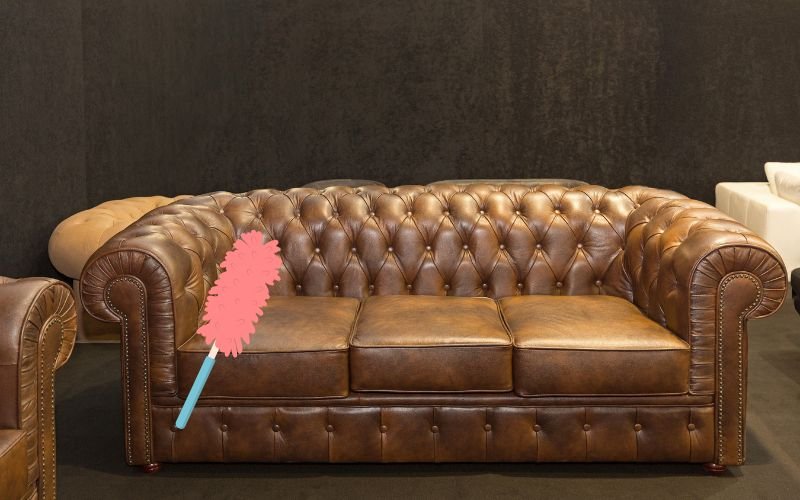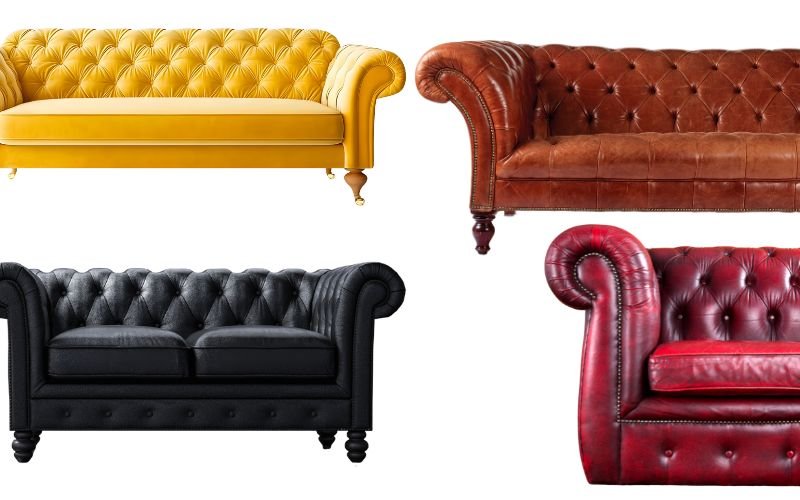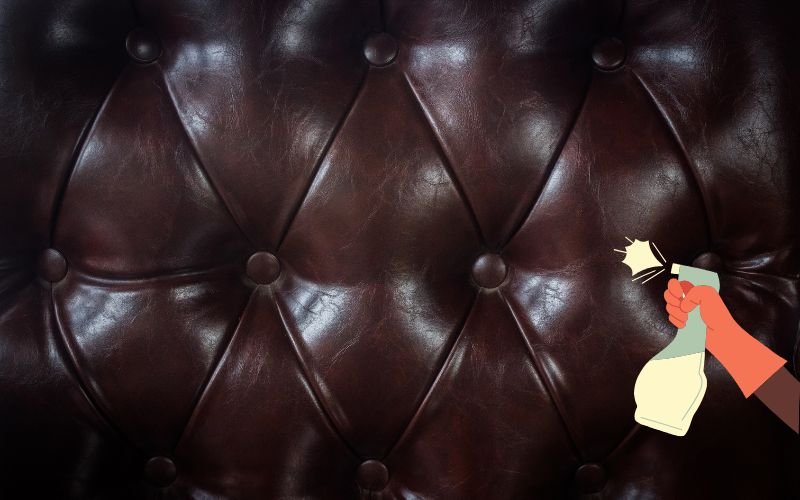“Quality is never an accident. It is always the result of intelligent effort.” — John Ruskin
When it comes to keeping a leather Chesterfield looking and feeling luxury, that remark couldn’t be more true. If you sell, show off, or just admire the rich history and strong presence of a brown leather Chesterfield sofa, then you already know that these items are more than just furniture; they’re part of your family’s history.
However, you must look after your heritage.
Leather, especially the top-grain kind used in high-end Chesterfields, is strong but also weak. It can crack, fade, dry out, or lose its personality if you don’t take care of it. What is the solution? A conditioning routine that is done at the right time and in the right way.
In this whole guide, we’ll go over everything that suppliers, resellers, and owners need to know about maintaining leather couches, including leather sofa beds and showroom models, looking like they simply emerged from the showroom each year. Plus, we’ll show you how Classic Chesterfield’s Leather Care Oil can make every piece in your collection last longer and look better.

Let’s get into it.
Why Leather Conditioning Is Non-Negotiable
Leather doesn’t just wear out; it becomes older. And if you don’t take care of it, it gets worse with time.
Here’s what happens if you don’t do conditioning:
- The oils that are already there go away.
- The surface dries up.
- There are cracks.
- Colour fades, especially in brown leather Chesterfield sofas.
Conditioning puts back oils and moisture that have been lost, which helps the leather keep its softness, strength, and unique patina.
Regular conditioning protects your investment and makes sure that every Chesterfield looks as fantastic in year five as it did on day one, whether you’re maintaining stock for a boutique showroom or supplying interior designers.

Understanding the Leather You’re Working With
Before you get any conditioner, you should know what kind of leather your Chesterfield is made of:
- Full-Grain Leather: The best kind since it has a rich feel and natural markings.
- Top-Grain Leather: A little bit of sanding gives it a smooth look. It’s typical in high-end furniture.
- Bonded Leather: Made from scraps, it is less durable and isn’t good for high-end items.
Full- or top-grain leather is used in most leather sofa beds and traditional Chesterfields. Because they are permeable and sensitive to stress from the outside world, these sorts need conditioning.
How Often Should You Condition a Leather Chesterfield?
Here’s a short guide to how often:
- Every six months for household use in mild climates
- Every three to four months in dry, hot, or air-conditioned places
- For showroom stock or heavy use, every 2 to 3 months
Pro tip: If your brown leather Chesterfield sofa is near a window or heater, it may need more care because UV rays and heat can dry it out faster.
Step-by-Step: Conditioning a Leather Chesterfield Sofa
Step 1: Clean the Surface
Dust can be wiped away using a dry, soft cloth. You can use a cleaner that is appropriate for leather (not detergent-based) to wipe away body oils and spills for a deeper clean.
Step 2: Apply a Quality Leather Care Oil
Use a product made just for expensive leather, like Classic Chesterfield’s Leather Care Oil. This oil moisturises the skin deeply without leaving a greasy behind.

Step 3: Work It In
Use a clean microfiber cloth to apply in tiny circles. Pay attention to the places that cause stress, like the armrests, seat cushions, and corners.
Step 4: Let It Absorb
Give the conditioner a minimum of one hour to sit. Use a dry towel to remove any excess.
Step 5: Buff to Finish
Buff the leather to bring back its natural shine and make sure the finish is even.
Best Practices for Suppliers and Retailers
If you sell Chesterfield furniture in Australia, you need undertake to take care of it by conditioning it. This is why:
- Showroom appeal: Sofas that are in good shape draw in clients and show off the excellence of your business.
- Long-term client satisfaction: Giving advice on how to care for something after the sale helps develop trust.
- Inventory longevity: Leather ages even while it’s in storage, so protect it before it starts to dry out.

Include leather care oil, microfiber wipes, and instructions in care kits that you sell together. This not only makes your transaction more valuable, but it also makes your business look like a trustworthy expert in high-end furnishings.
You can also boost your brand’s trust by offering brief customer service webinars or workshops, either online or in-store. Customers are more likely to come back to your store or tell others about it if they know how to take care of their leather sofa beds and Chesterfields.
What to Avoid When Conditioning Leather
Knowing what not to do is equally important:
- Don’t mix things like vinegar or coconut oil yourself. Over time, these can damage leather.
- Stay away from silicone-based creams that make your skin glossy but obstruct your pores.
- Don’t put too much on. More isn’t always better.
- Don’t clean leather that is soiled. Always clean first.
A lot of leather problems originate with good intentions but bad means. If your clients bought a high-end brown leather Chesterfield sofa, teaching them about these blunders can help them protect their investment and your reputation.
Special Note: Leather Sofa Beds Need Extra Love
Leather sofa beds accomplish two jobs. People sit on them during the day and sleep on them at night. This means that there are more oils in the body, more wrinkles, and more need for conditioning.
If you sell or show these hybrid models, you should condition them more often. Pay attention to the seams and folds, which tend to get stiff.
Make sure to tell buyers about the special needs of these multi-use items. Giving personalised care suggestions not only stops problems from happening in the future, but it also shows that your business pays attention to the little things.
Common Questions on Leather Conditioning for Chesterfield Sofas
Can I use the same conditioner on all of my leather sofas?
No. Always pick a product that is made for full- or top-grain leather. For heritage items, we suggest using Classic Chesterfield Leather Oil.
Will conditioning my brown leather Chesterfield sofa change its colour?
At first, it may get a little darker, but this goes away as it absorbs. It really makes the patina better!
How can I tell if my Chesterfield needs conditioning?
It’s time to do something about the leather if it seems dry, dull, or stiff. Place a drop of water on top. Your leather is thirsty if it doesn’t soak up gently.
What distinguishes a leather conditioner from a leather cleaner?
Cleaners get rid of dirt and oils, while conditioners add moisture and suppleness back in. Use both in that order for the best results.
Final Thoughts: Protect the Prestige
Chesterfield chairs are more than just a place to sit; they are a style. Taking care of its leather will keep that statement strong for years, even decades.
If you’re a supplier, reseller, or interior designer, treating leather properly isn’t something you can put off. It’s part of what the product promises. And now you know just how to keep that commitment.
Start by keeping Classic Chesterfield’s Leather Oil in hand and suggesting a conditioning procedure with every brown leather Chesterfield sofa or leather sofa bed you sell. Your reputation shines when your leather does.










